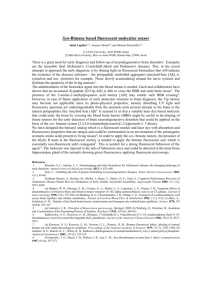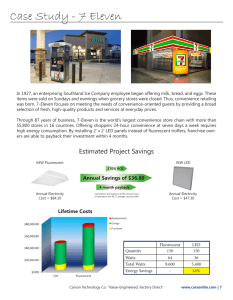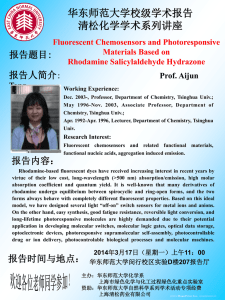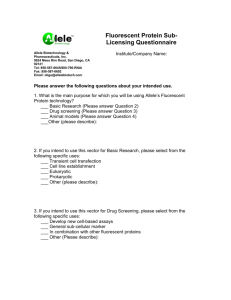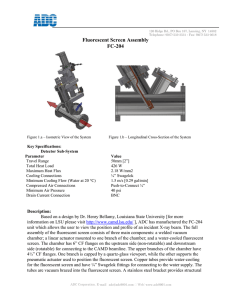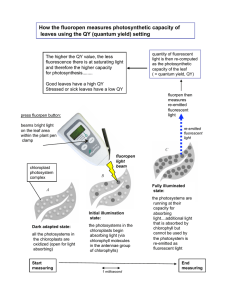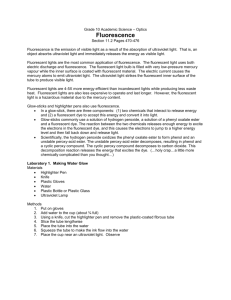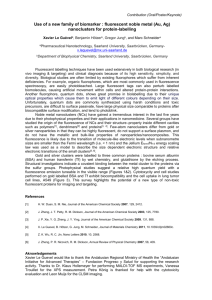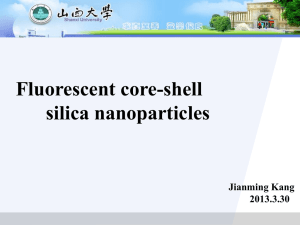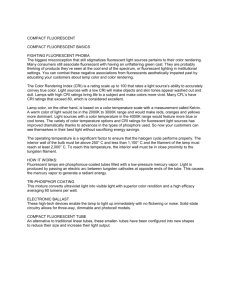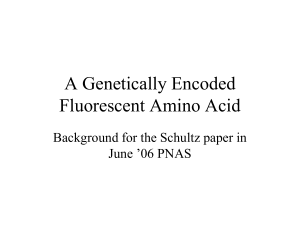Essential Question of the Day
advertisement
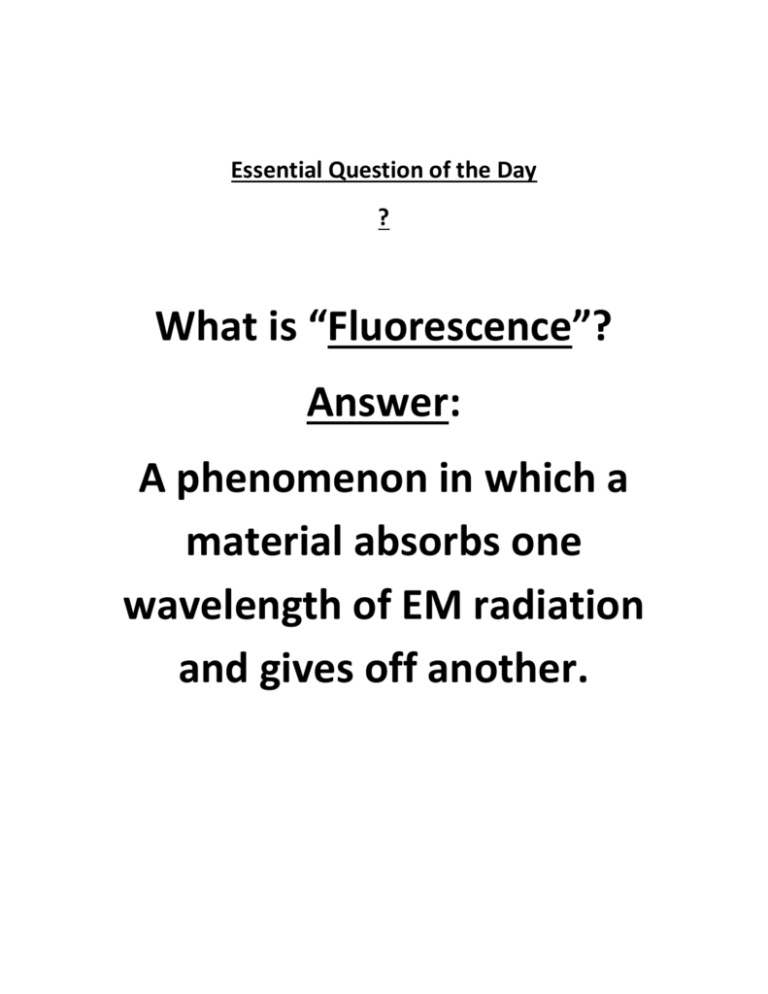
Essential Question of the Day ? What is “Fluorescence”? Answer: A phenomenon in which a material absorbs one wavelength of EM radiation and gives off another. Examples of Fluorescence: White paper is treated with fluorescent compounds to make it appear brighter. Historical documents that have been forged can sometimes be detected by placing them under a black light to see if they fluoresce; fluorescents have only been used in paper made after about 1950. Club soda or tonic water contains quinine, a bittertasting fluorescent compound that glows blue-white under a black light. Vitamins (specifically vitamin A, thiamine, niacin, and riboflavin) fluorescent strongly. A small piece of a vitamin B-12 tablet crushed and dissolved in vinegar glows a bright yellow under UV light. Chlorophyll fluoresces with a blood red color. Grind spinach or Swiss Chard with ethanol and filter the resulting chlorophyll extract. Bright white light can be used to drive the fluorescence. Place the extract in a petri dish on top of an overhead projector lamp in a darkened room to get the full effect. Many biological fluids contain fluorescent molecules. Forensic scientists use UV lights on crime scenes to detect fluorescence from blood, urine, or semen. Some marine organisms (notably jellyfish) produce proteins that are very intensely fluorescent. Antifreeze fluid contains additives that fluorescent. Investigators sometimes use black lights to look for antifreeze splashes on pavement and vehicles to reconstruct automobile accident scenes. Laundry detergents contain fluorescent molecules to make the whites "whiter than white". Detergent residues on white clothing causes it to glow blue-white under a black light. These fluorescents sometimes make white clothing appear blue in color photographs. Dental enamel and whiteners also contain fluorescent compounds that fill in the blue part of the spectrum to prevent the enamel from appearing too yellow. Postage stamps are printed with inks that contain fluorescent dyes. Some common minerals and gemstones fluorescent, including gypsum, talc, opal, agate, quartz, and amber. Fluorescence Light Bulbs
